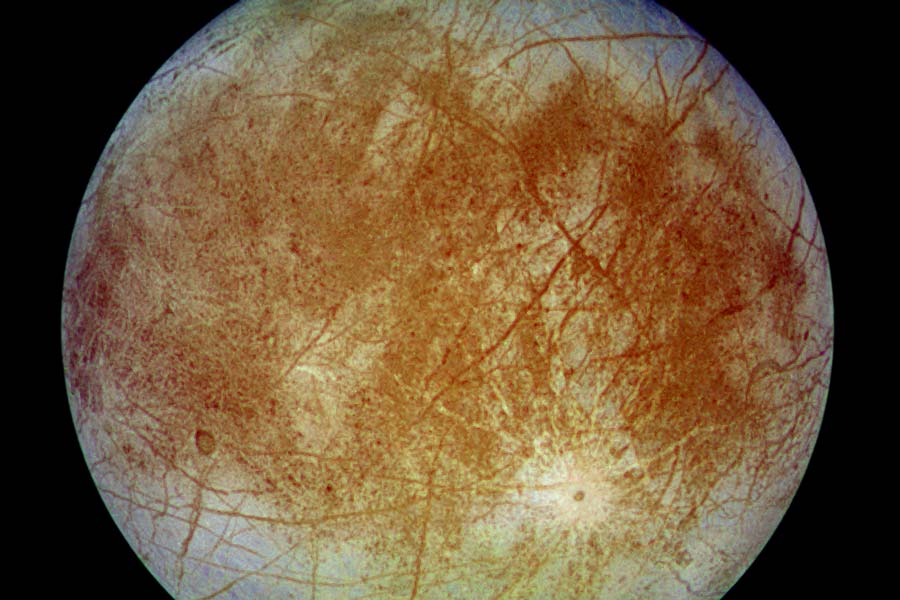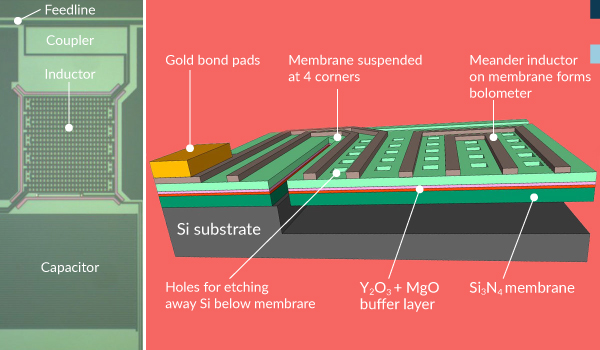Above:
Europa, an icy moon of Jupiter, is approximately the size of Earth’s moon and will be the target of future NASA missions; such outer planet exploration could benefit from instruments using detectors developed in MDL.
High T YBCO
Hot Superconductor Detectors
Dan Cunnane - Bruce Bumble - Alan Kleinsasser - Mark Lindeman - Warren Holmes
MDL is developing kinetic inductance bolometer (KIB) arrays based on the high temperature superconductor Yttrium Barium Copper Oxide (YBCO). These KIBs are intended for application to an IR Fourier transform infrared (FTIR) spectrometer for outer solar system missions. Operation at 55 K can be achieved using passive cooling. KIB detectors consist of an LC resonator circuit with the inductor residing on a thin Si nitride membrane. The membrane is heated by incident radiation and the temperature increase changes the kinetic inductance which shifts the LC resonator frequency. Each KIB in an array has a unique resonant frequency that is set by adjusting the interdigitated YBCO capacitor adjacent to the membrane. Many bolometers can thus be multiplexed on a single feedline to form an array with each resonator functioning as individual pixel of the detector.
Left: Optical micrograph on a YBCO resonator bolometer based on the temperature-dependent superconducting kinetic inductance.
Right: Schematic diagram of the bolometer structure. The YBCO inductor lies on a thin (<1 mm thick), suspended Si
3N
4 membrane. Optical micrograph on a YBCO resonator bolometer based on the temperature-dependent superconducting kinetic inductance.
+ Larger image



